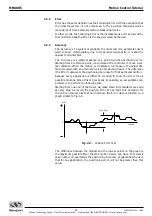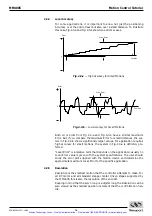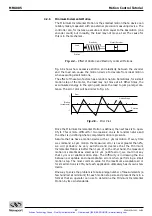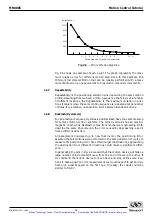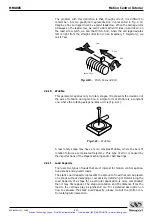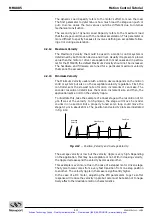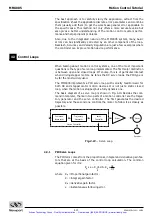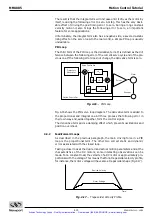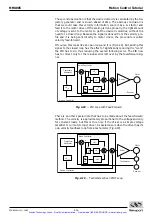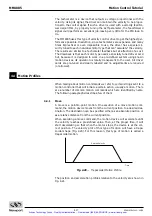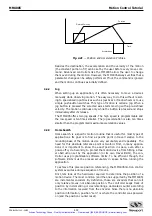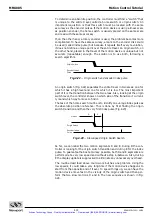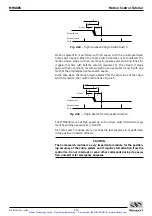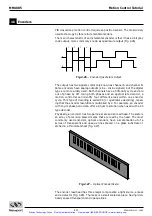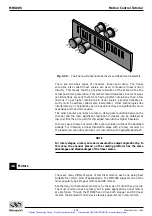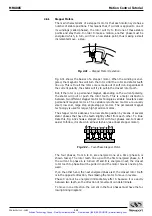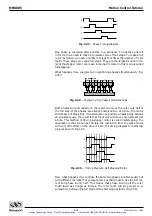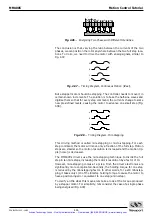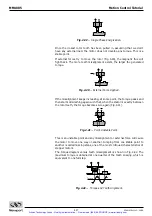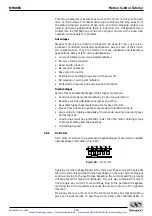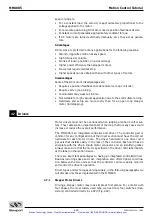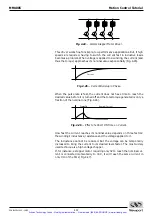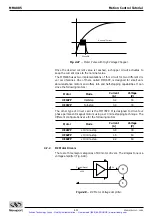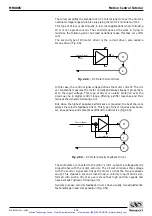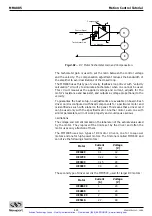
4.19
EDH0162En1040 – 06/99
MM4005
Motion Control Tutorial
To determine an absolute position, the controller must find a “switch” that
is unique to the entire travel, called a home switch or origin switch. An
important requisition is that this switch must be located with the same
accuracy as the encoder pulses. If the motion device is using a linear scale
as position encoder, the home switch is usually placed on the same scale
and read with the same accuracy.
If, on the other hand, a rotary encoder is used, the problem becomes more
complicated. To have the same accuracy, a mark on the encoder disk could
be used (called index pulse) but because it repeats itself every revolution,
it does not define a unique point over the entire travel. An origin switch, on
the other hand, placed in the travel of the motion device is unique but not
accurate (repeatable) enough. The solution is to use both, following a
search algorithm.
Fig. 4.22
— Origin switch and encoder index pulse.
An origin switch (Fig. 4.22) separates the entire travel in two areas: one for
which it has a high level and one for which it is low. The most important
part of it is the transition between the two areas. Also, looking at the origin
switch level, the controller knows on which side of the transition it current-
ly is and which way to move to find it.
The task of the home search routine is to identify one unique index pulse as
the absolute position reference. This is done by first finding the origin
switch transition and then the very first index pulse (Fig. 4.23).
Fig. 4.23
— Slow-Speed Origin Switch Search.
So far, we can label the two motion segments D and E. During D the con-
troller is looking for the origin switch transition and during E for the index
pulse. To guarantee the best accuracy possible, both D and E segments are
performed at a very low speed and without a stop in-between. Also, during
E the display update is suppressed to eliminate any unnecessary overhead.
The routine described above could work but has one problem. Using the
low speeds, it could take a very long time if the motion device happens to
start from the opposite end of travel. To speed things up, we can have the
motion device move fast in the vicinity of the origin switch and then per-
form the two slow motions, D and E. The new sequence is shown in Fig.
4.24.
Origin Switch
E
D
Motion
Encoder Index
Pulse
Origin Switch
Encoder Index
Pulse
Artisan Technology Group - Quality Instrumentation ... Guaranteed | (888) 88-SOURCE | www.artisantg.com

